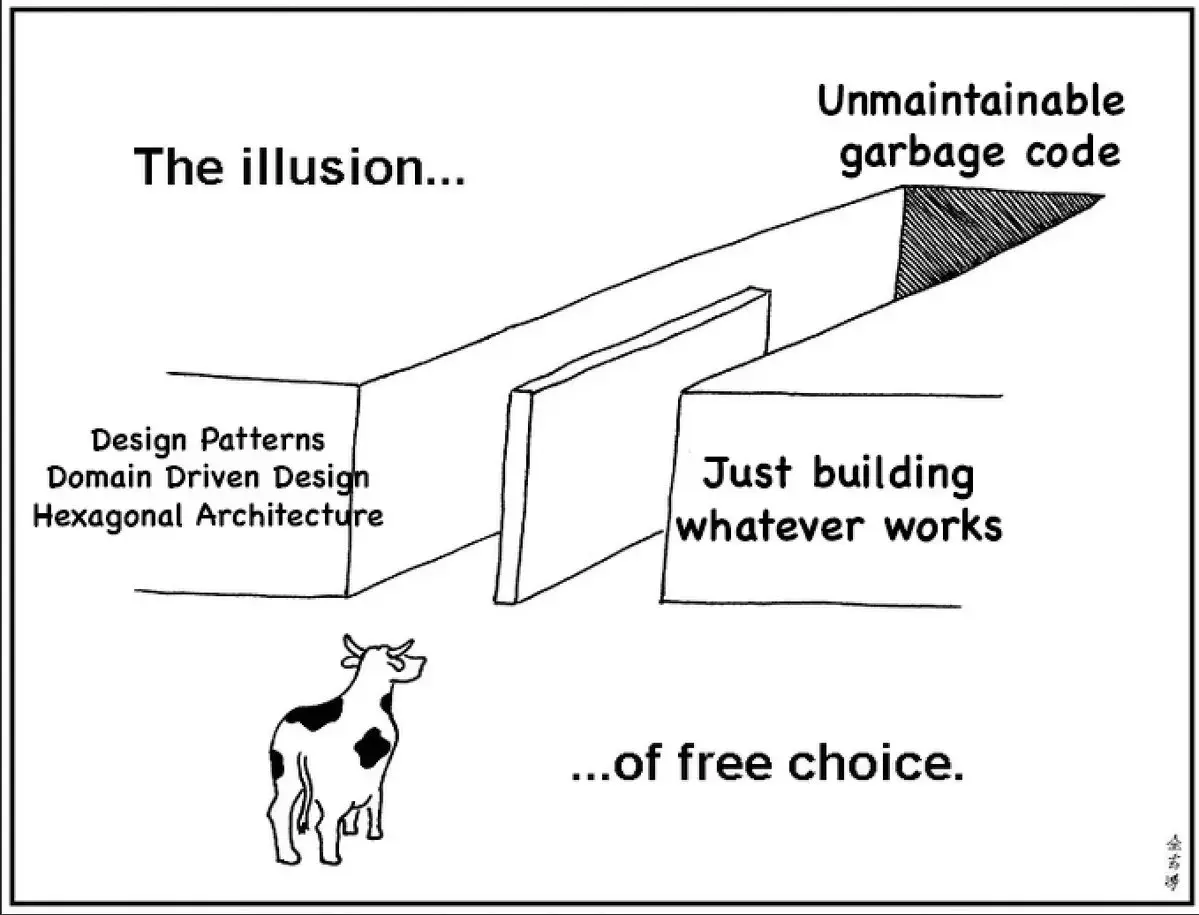this post was submitted on 12 Apr 2024
801 points (98.8% liked)
Programmer Humor
19511 readers
341 users here now
Welcome to Programmer Humor!
This is a place where you can post jokes, memes, humor, etc. related to programming!
For sharing awful code theres also Programming Horror.
Rules
- Keep content in english
- No advertisements
- Posts must be related to programming or programmer topics
founded 1 year ago
MODERATORS
you are viewing a single comment's thread
view the rest of the comments
view the rest of the comments

You've yourself here. You can not predict how it wull change. Which means that whichever design for change you've made, may just as well completely miss the future utilization
Which doesn't mean that we shouldn't design for change at all... Just saying.
You can build your systems with as few assumptions as possible. The fewer assumptions you make, the less probable it is that any of your future assumptions will conflict with your previous assumptions. Your code will be built for change.
If your API call to some external system assumes the existence of a particular button in the UI, then your system isn’t built for change. Maybe you want to change this button? Then you need to go through all places in the code that relies on this particular button to see if it doesn’t conflict with any of their assumptions.
.... Saying what, exactly?
I said that we should
And you argued... The same thing? Just in the reverse order?
Seems like he's worried you'll Java everything up, which can be valid.
I think a good, easy example is whether your application should allow a selection of databases or be tied to one database.
You can make arguments for either, often (but not always) regardless of your use case.
You can design it to be changeable at all, though.
In the simplest case that's just proper abstractions. You can't change details in the rest controller, if the persistence layer absolutely needs to call methods from the rest controller for no reason.
Finding the right balance between YOLO and YAGNI is almost impossible to get right. But you can at least try not to land on the extremes.
As long as loose coupling, and separation of concerns are well tinkered into your application you minimise risks of breaking everything on a restructuring.
If you have for example shared state leaking everywhere into the program, your most probably doomed on the slitest changes.
I am not saying you're wrong, but there are ways to mitigate the risks even without knowing what will happen in the future.